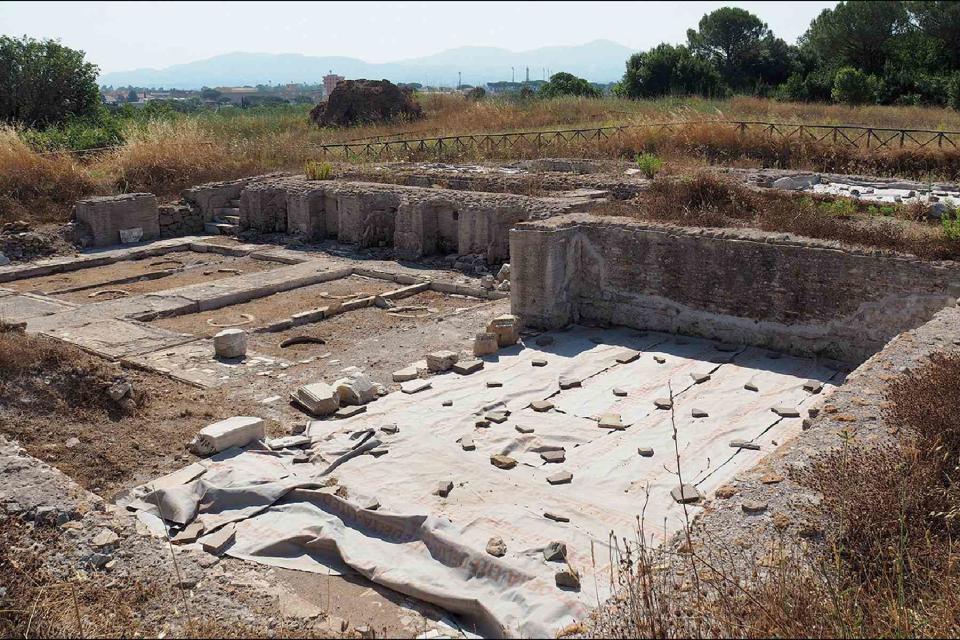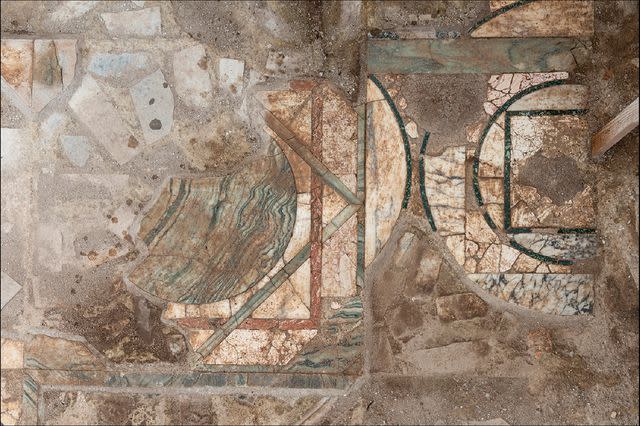Ancient Romans Watched People Stomp Grapes in a Luxurious Winemaking Theater
Archaeologists say the builders of opulently-decorated winemaking facility chose form over function.

E. Dodd
Everyone loves dinner and a show, whether it’s “Mayfair After Dark” at the Bellagio in Las Vegas, a tango performance at an intimate club in Buenos Aires, or just casually watching a couple break up at the table beside you. Apparently, some ancient Romans were into a bit of spectacle with their meals too, but their idea of an entertaining production was watching other people make wine.
For almost a decade, archaeologists carefully excavated the site of a circa-third century Roman winery discovered less than five miles south of Rome, and another group of experts have finally started to interpret those findings. According to an academic analysis published in the journal Antiquity, this complex at the Villa of the Quintilii was a ridiculously ornate wine production facility where the upper classes would watch as others stomp grapes. “The complex illuminates how ancient elites could fuse utilitarian function with ostentatious luxury to fashion their social and political status,” the authors wrote in their abstract.
Some parts of the facility were characteristic of Roman wineries, including a “grape treading area,” a pair of grape presses and “a system of channels” connecting the above-ground components to a wine cellar. But what wasn’t typical were the luxe materials that were used, and the “decoration and arrangement” of the complex. (The academics who detailed the winery in Antiquity described its as “unparalleled for a production context in the Roman, and perhaps entire ancient, world.”)
Related:Archaeologists Have Uncovered the World's Oldest Industrial-Scale Brewery in Egypt
“It’s an elite display of associating with the world of peasants and workers,” Emlyn Dodd, an archaeologist at the British School at Rome and one of the study’s co-authors, told Science. “There’s definitely a sense in Roman religion that they try to connect themselves to common people.” (He added that this part of the Villa of the Quintili was “decorated to a stupendous level” and had a “bizarre degree of opulence.”)

S. Castellani
The wine-treading area itself was uncharacteristic. Dodd told The Guardian that in most cases, they would be finished with a layer of waterproof concrete, to ensure that grape-squashers could stay on their feet as they stomped. But at the Villa, the stomping section was covered with red marble. “Which isn’t ideal as marble gets incredibly slippery when wet,” he explained to the outlet. “But it shows that whoever built this was prioritizing the extravagant nature of the winery over practical considerations.”
The entire complex covers almost 60 acres, and the winery was discovered by accident when archaeologists were trying to find part of the villa’s former chariot racing track. The Guardian reports that as excavations continued, they discovered that the winery had been constructed later than the track, and was actually built over the starting gates that they were looking for.
We’re not saying that we would’ve been the kind of Roman resident who would’ve watched winemakers lose their footing on a slick marble floor, but we will say that it probably wasn’t history’s worst dinner show.
For more Food & Wine news, make sure to sign up for our newsletter!
Read the original article on Food & Wine.

